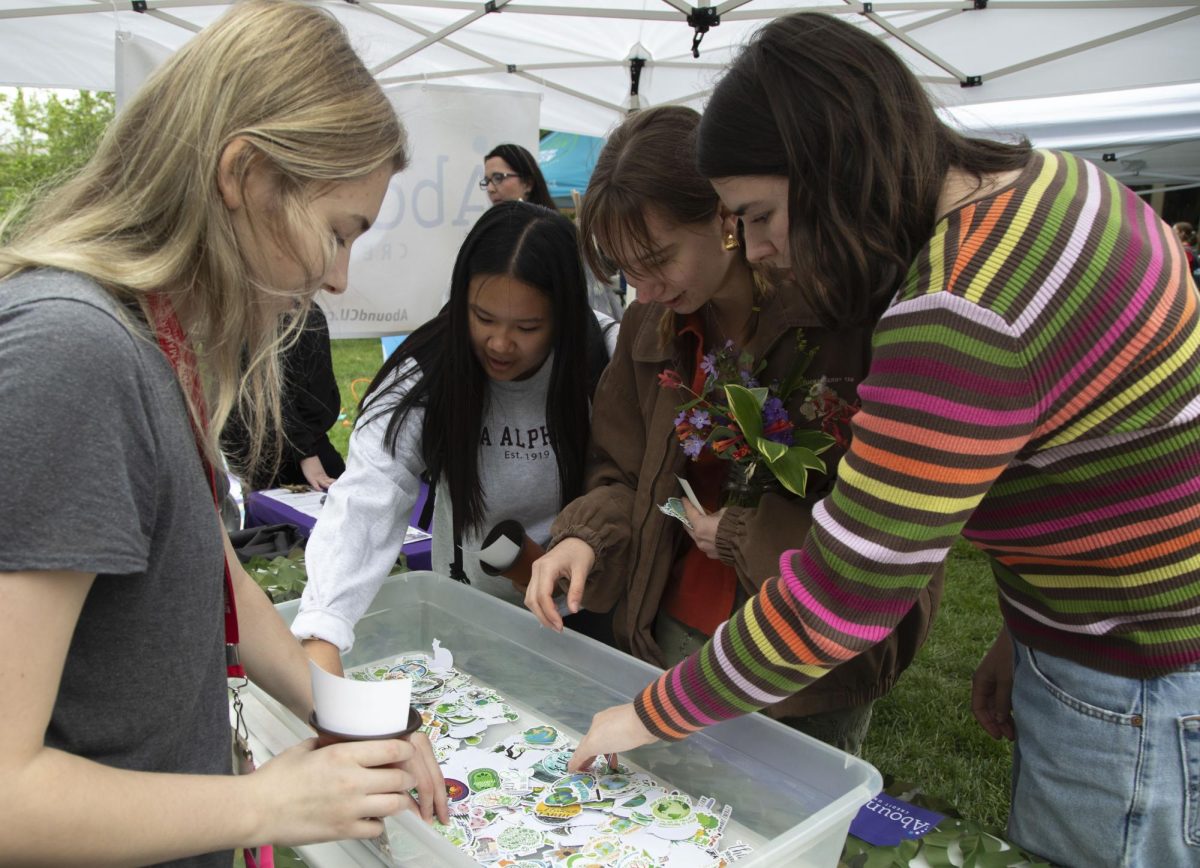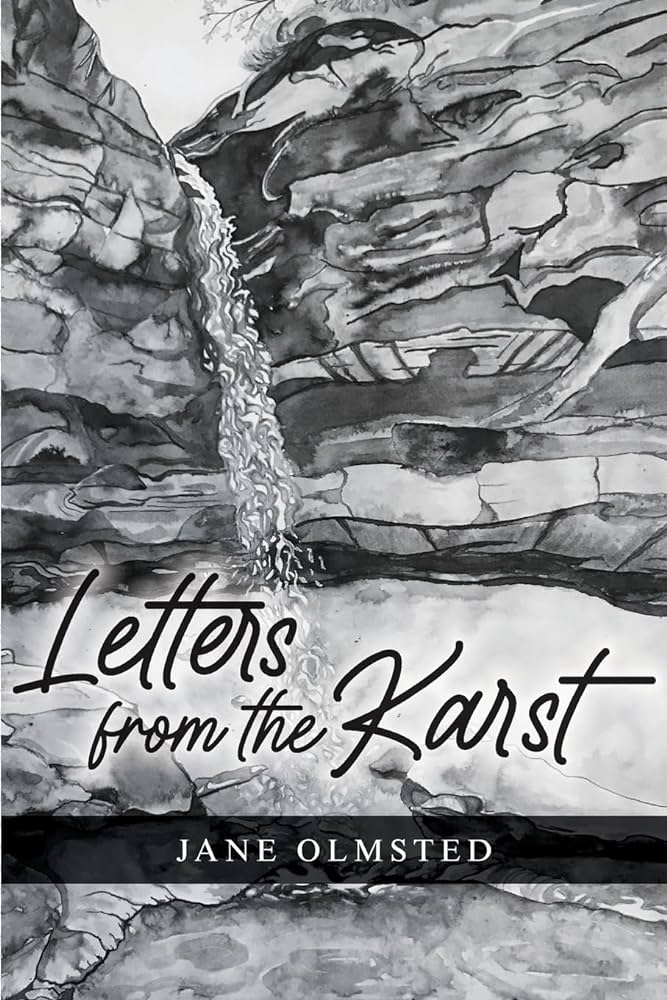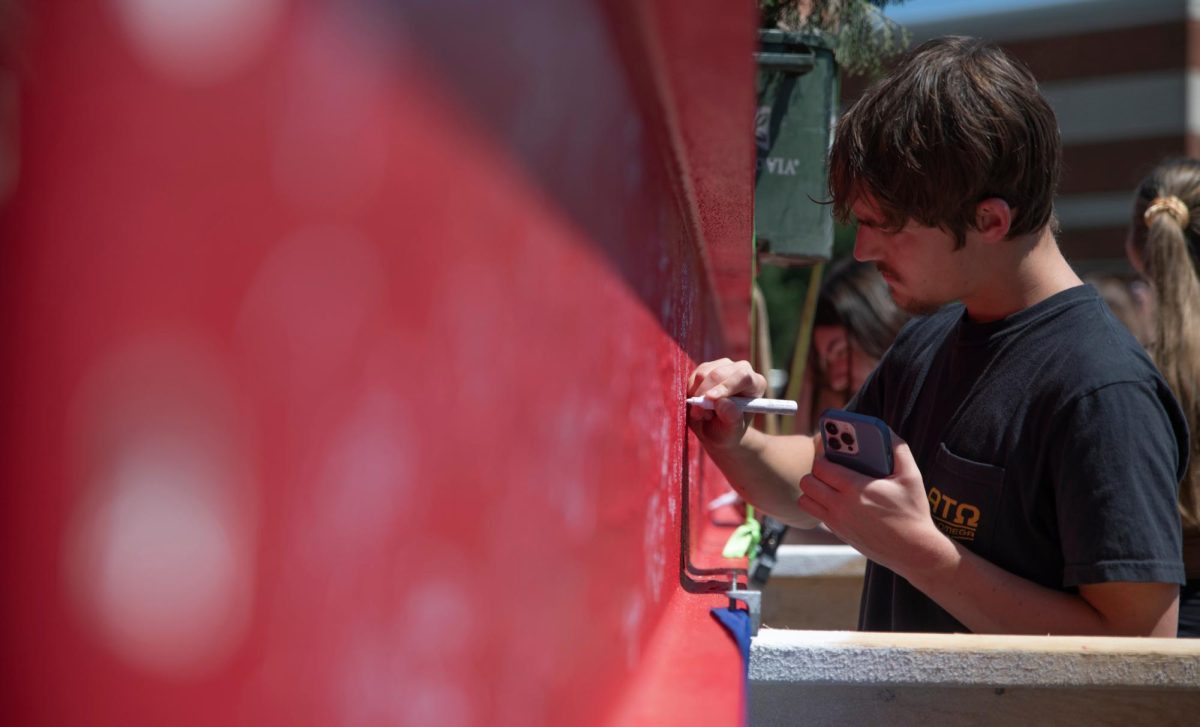Students named semifinalists in national competition
November 1, 2017
Four students from the Gatton Academy of Mathematics and Science were named national semifinalists in the 2017 Siemens Competition in Math, Science and Technology.
Second-year students at Gatton Academy, Keelee Pullum, Daniela Zieba, Wren Jenkins and Camuel Hart were recognized as semifinalists. Gatton Academy was the only school in Kentucky to have students recognized as semifinalists.
The Siemens Competition is a U.S. science research competition for high school students. The 2017 competition received over 1,860 entries, with 491 entries recognized as semifinalists.
Cheryl Kirby-Stokes, the Academic Opportunities Coordinator for Gatton Academy, said Gatton students have been participating in the Siemens Competition since 2009. This year, 27 students applied for the competition, the highest number in Gatton history, Kirby-Stokes said.
The Siemens Foundation aims to “advance workforce development and education initiatives in science, technology, engineering and math,” according to their website. The Siemens Foundation established the Siemens Competition in Math, Science and Technology in 1999.
Kirby-Stokes said the competition has “nothing but good impacts” for participants.
“It gives them their first experience at writing a bona-fide research reports, they get to work as professionals with professionals, the research report has many times led to publication in science journals and they also are able to use the research they’ve completed to enter other prestigious science and scholarship committees,” Kirby-Stokes said.
According to Pullum, participants had to gather data about a research project and submit a written report with a maximum of 18 pages. This was Pullum’s first time entering a research-based competition, and she said completing the project took months of research.
Pullum began her research with Noah Ashley, assistant professor of biology, in February. She worked on research in neurobiology about the effects of sleep fragmentation on other parts of the brain and body.
Spending months on her research, Pullum said she ran into “stumbling blocks” with difficulties concerning pieces of equipment and staining protocols. She also found writing the report challenging because the writing style was “technical” and “foreign.”
Jenkins and Zieba collaborated together on their research project called Shovelware, which is a mix of computer science and anthropological archaeology. Specifically, the project focused on cloud computing in computer science and bioarcheological classification in archaeology.
Zieba said she began doing research in the WKU Cloud Engineering Lab under Jeffrey Galloway, assistant professor of computer science, last fall.
She officially began her project in May after she was inspired by a peer speaking about archaeological class. Jean-Luc Houle, associate professor of folk studies and anthropology, advised her on the relevancy of computer science to archaeology, and Jenkins joined the project in the summer of 2017, focusing on the bioarcheological component.
While Jenkins and Zieba have attended undergraduate research conferences and presented research at high school events, this is their first time entering a competition-based science fair.
According to Zieba, she went through several setbacks before applying for the Siemens Competition.
She applied for the Gatton Research Internship Grant with a different cloud computing project and an internal WKU Grant and was rejected from both.
“I was feeling discouraged when submitting to the Siemens Competition,” Zieba said. “If Gatton and WKU wouldn’t fund me, then it seemed that it was a sign that my projects [and] disciplines wouldn’t be good enough for Siemens.”
However, she continued to work at her project at home and was paid as a WKU research assistant for five weeks this summer. After Zieba and Jenkins went to England through the Harlaxton program, they finished their research and wrote their report for Siemens.
Hart began his research in September with the assistance of Claus Ernst, mathematics professor, focusing on knot theory, which is a subfield of the mathematical area of topology. In his research, Hart and Ernst examined a possible algorithm for knot theory.
While none of the students were named regional finalists in the Siemens Competition, their research does not end there. Zieba and Jenkins plan on making more progress in their research and targeting undergraduate research opportunities.
Likewise, Pullum said she wants to continue with research in the future.
“Research is my passion,” Pullum said. “In biomedical research, you get the opportunity to make contributions to science that could potentially help millions of people.”
Although the students did not advance in the competition, Lynette Breedlove, the director of the Gatton Academy of Mathematics and Sciences, said she was proud of the students for participating in the research project despite busy academic schedules.
Likewise, Kirby-Stokes said she “couldn’t be prouder.”
“The Siemens Competition is a complicated and time-consuming application, so it takes a great deal of effort on the student’s part to complete the process,” Kirby-Stokes said. “It was a sincere pleasure working with these talented and interesting young people, and I cannot wait to see what they accomplish in the future.”
Reporter Adrianna Waters can be reached at 270-745-6011 and [email protected].



















![Students cheer for Senator at Large Jaden Marshall after being announced as the Intercultural Student Engagement Center Senator for the 24th Senate on Wednesday, April 17 in the Senate Chamber in DSU. Ive done everything in my power, Ive said it 100 times, to be for the students, Marshall said. So, not only to win, but to hear that reaction for me by the other students is just something that shows people actually care about me [and] really support me.](https://wkuherald.com/wp-content/uploads/2024/04/jadenmarshall-600x422.jpg)





